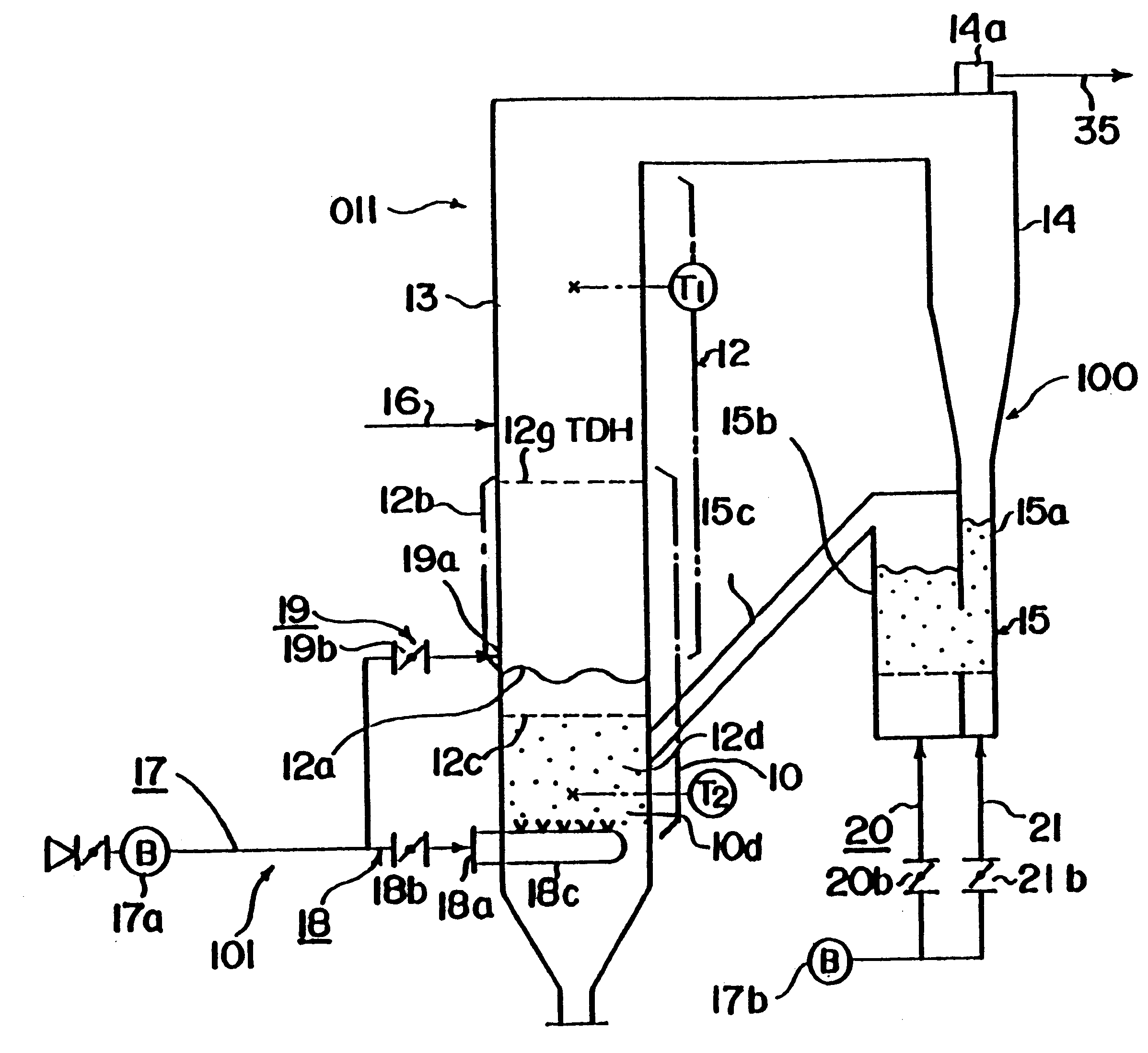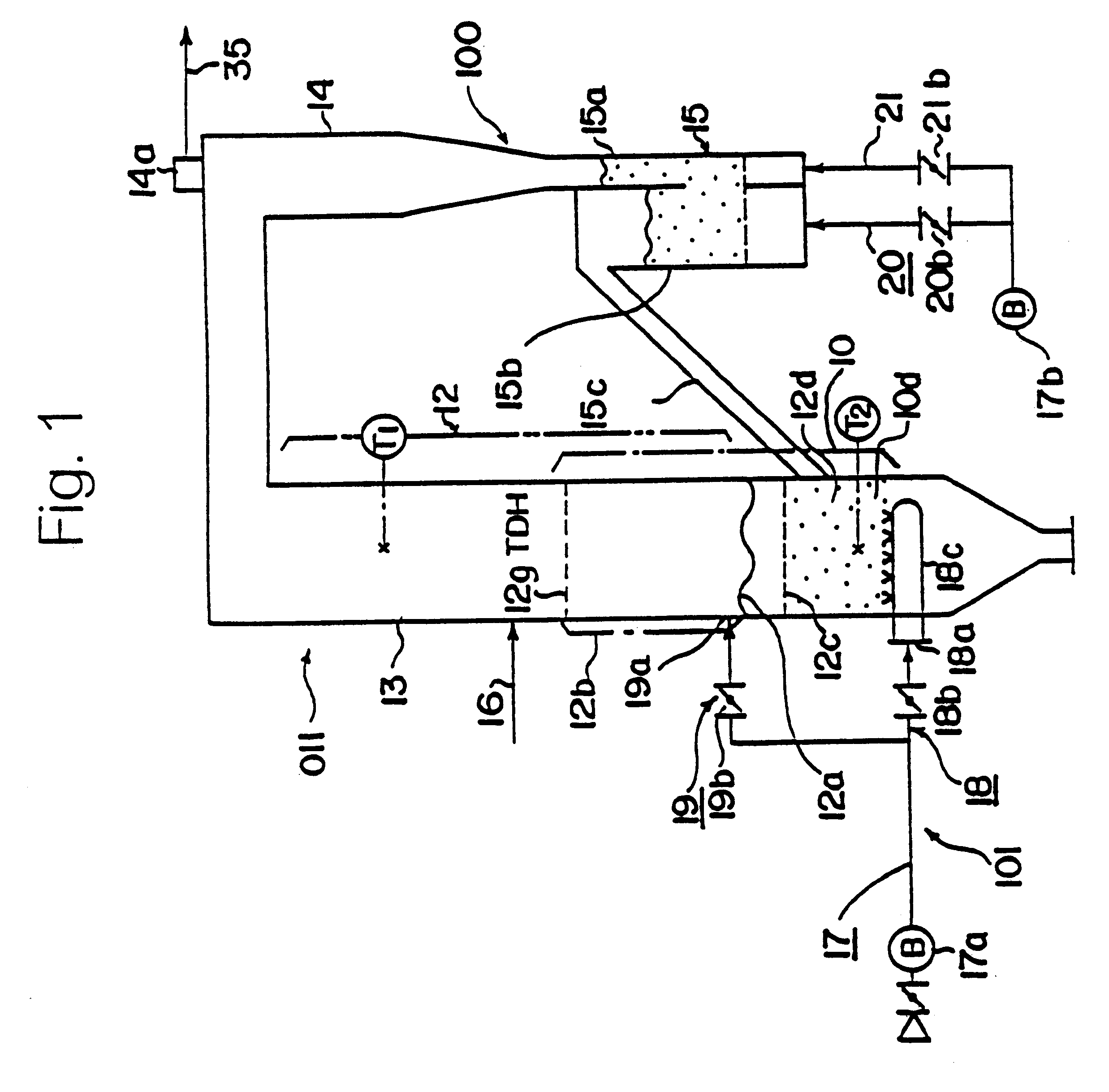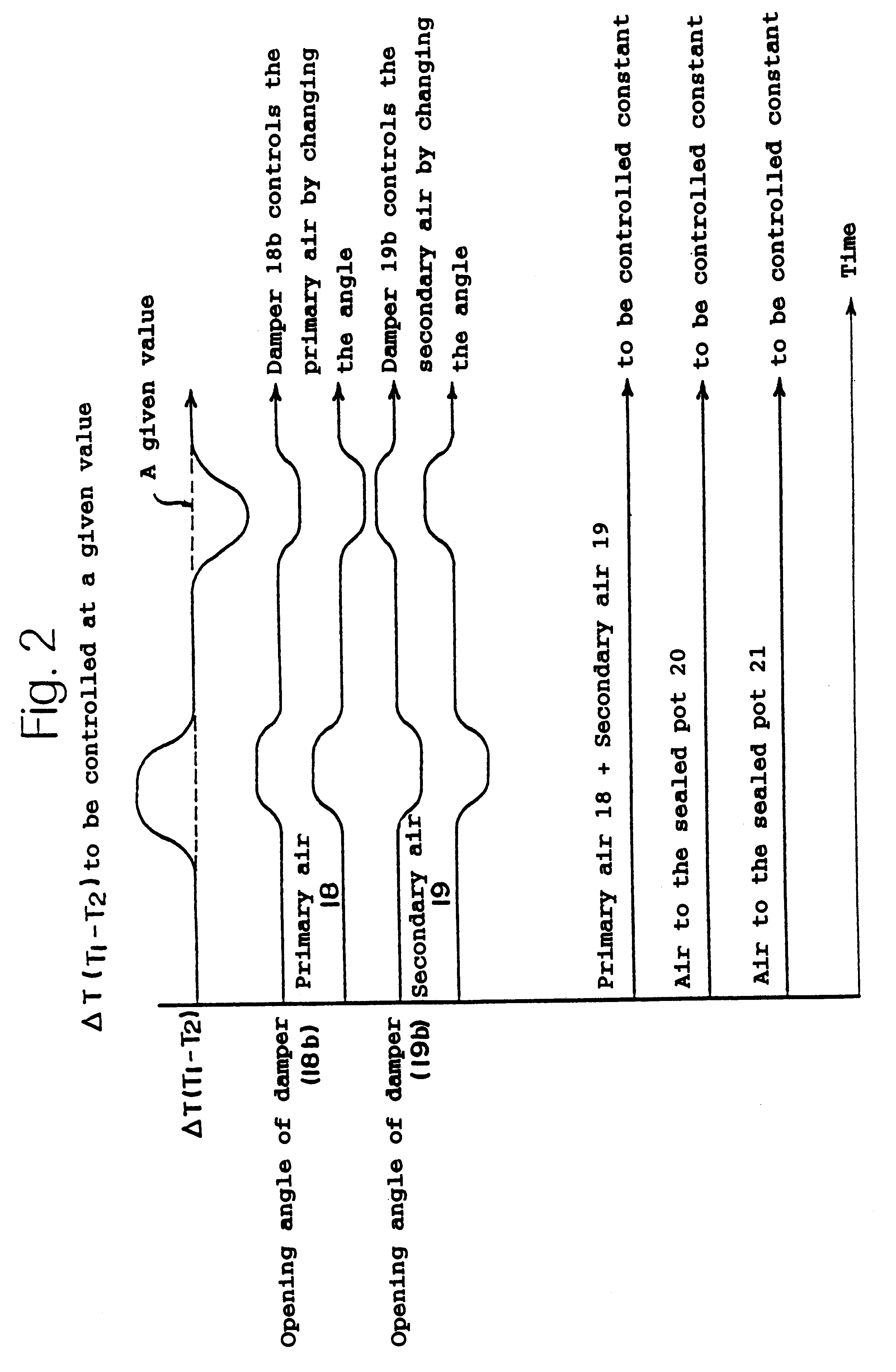Operating method of fluidized-bed incinerator and the incinerator
a technology of fluidized bed and incinerator, which is applied in the direction of fluidised bed combustion apparatus, lighting and heating apparatus, combustion types, etc., can solve the problems of inconvenient combustion, waste of extra air, and parts of the freeboard becoming too hot,
- Summary
- Abstract
- Description
- Claims
- Application Information
AI Technical Summary
Problems solved by technology
Method used
Image
Examples
first preferred embodiment
In FIG. 1, 011 is a fluidized bed incinerator. In the first embodiment, it is constructed as follows.
10 is the region in the lowest part of the tower which contains sand fluidized by air bubbles. Primary air 18 is injected into the bottom of this region via device 18c to disperse the fluidizing gas. Fluidizing sand 10d, the silica or other sand which serves as the fluidizing medium, is fluidized when air bubbles form in dense bed 12d.
12 is the region above the fluidizing region 10 in which the particles are entrained. When the bubbles on the surface 12a of the fluidized sand in the region 10 burst, particles are propelled upward into splash zone 12b. Secondary air 19 is introduced into splash zone 12b via aperture 19a, and the particles are entrained and conveyed upward into freeboard 13.
100 is the recirculation unit connected to the outlet of the aforesaid entraining region 12. The fluidizing medium which is driven up into splash zone 12b by the aforesaid secondary air 19 is entrai...
second preferred embodiment
In FIGS. 3 and 4, 011 is a fluidized bed incinerator. The second preferred embodiment of this invention has the following configuration. The said fluidized bed incinerator 011 consists of: a fluidizing region 10, in which primary air 18 is blown into the bed containing sand 10d, the fluidizing medium consisting of silica or the like, through gas dispersion device 18c, which is located on the bottom of the tower, in order to fluidize the sand; an entraining area 12, into which secondary air 25 is introduced, to entrain and convey the aforesaid sand 10d into the freeboard 13 above it, from any of channels 22, 23 or 24 through 1 or more, as selected by control unit 30, of inlets 22a, 23a or 24a, provided at three heights on the wall of the tower in splash zone 12b, into which sand 10d is carried when bubbles on surface 12a of the said fluidized bed 10 burst; recirculation unit 100, which entrains and conveys the aforesaid sand 10d which has been flung into splash zone 12b, on air intro...
third preferred embodiment
In FIG. 9, 011 is a fluidized bed incinerator which is the third preferred embodiment of this invention. This incinerator has the following configuration.
The said fluidized bed incinerator 011 has the following components. Fluidizing region 10 contains a mass of sand 10d, consisting of silica or some similar substance to serve as the fluidizing medium. Region 10 has a dense bed 11 on which static bed 12c is formed. Primary air 18 is blown into dense bed 11. The interior of the said dense bed 11 is fluidized by air bubbles and forms fluid surface 12a. As the bubbles burst, the particles of sand are thrust upward to form splash zone 12b. Secondary air 19, which entrains and conveys the grains of sand to the aforesaid splash zone, is admitted to the furnace and conveys the particles which serve as the fluidizing medium into freeboard 13, located above the fluidizing region.
The said fluidized bed incinerator 011 also has a separator 14, a cyclone or other device which conveys the afores...
PUM
 Login to View More
Login to View More Abstract
Description
Claims
Application Information
 Login to View More
Login to View More - Generate Ideas
- Intellectual Property
- Life Sciences
- Materials
- Tech Scout
- Unparalleled Data Quality
- Higher Quality Content
- 60% Fewer Hallucinations
Browse by: Latest US Patents, China's latest patents, Technical Efficacy Thesaurus, Application Domain, Technology Topic, Popular Technical Reports.
© 2025 PatSnap. All rights reserved.Legal|Privacy policy|Modern Slavery Act Transparency Statement|Sitemap|About US| Contact US: help@patsnap.com



